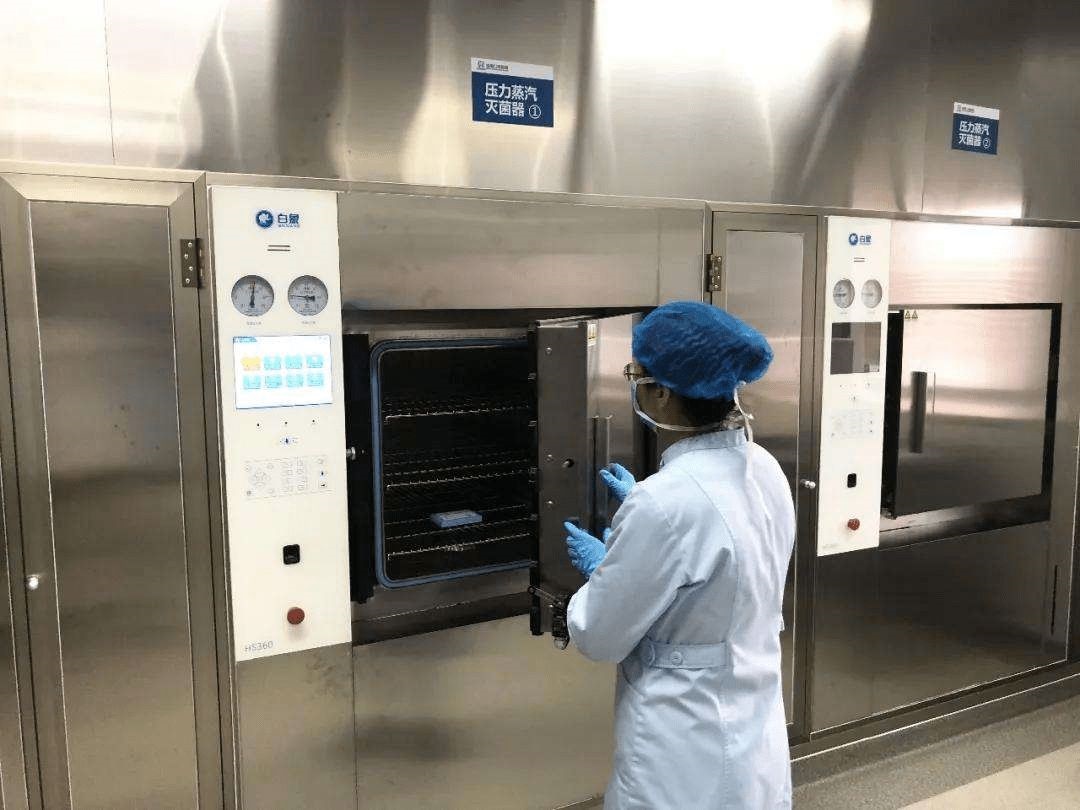일반적인 의료 멸균 방법은 무엇입니까??
2022-01-25

Sterilization is the use of physical or chemical methods to destroy all microorganisms including large numbers of resistant bacterial spores. Make it sterile to avoid infection and spread of disease during use.
Common medical sterilization methods include: dry heat sterilization, moist heat sterilization, gas sterilization, radiation sterilization, filter sterilization, 등. The following is a brief introduction to these sterilization methods
Dry Heat Sterilization
Place the items in a dry heat sterilization cabinet (상자), and use dry hot air to kill microorganisms or eliminate pyrogenic substances.
적용 범위: Glassware, metal utensils, and items that are resistant to high temperature but should not be sterilized by moist heat sterilization can all be sterilized by this method.
Dry heat sterilization conditions are generally (160-170℃)×120min or more, (170-180℃)×60min or more or 250℃×45min or more.
When dry heat sterilization is used, the items to be sterilized should have an appropriate loading method and should not be arranged too densely to ensure the effectiveness and uniformity of sterilization.
The most commonly used biological indicator for dry heat sterilization is Bacillus subtilis spores.
Moist Heat Sterilization
A method of killing microorganisms by placing the items in a sterilizer (pot), and using high-pressure saturated steam to denature the proteins and nucleic acids in the microbial cells. This method has strong sterilization ability and is the most effective and widely used sterilization method in thermal sterilization.
적용 범위: buffer solution, culture medium, clean clothes, glassware, infectious dirt and other items that will not change or be damaged when exposed to high temperature and high humidity.
Moist heat sterilization usually adopts 121℃×15min or 121℃×30min. During sterilization, the sterilized items should be loaded in an appropriate manner, and should not be arranged too densely to ensure the effectiveness and uniformity of sterilization.
The most commonly used biological indicator for moist heat sterilization is Bacillus stearothermophilus spores.
Gas Sterilization
Use the gas formed by chemical disinfectants to kill microorganisms. Gas sterilization can be subdivided into ozone sterilization and ethylene oxide sterilization.
1. Ozone Sterilization and Disinfection
오존은 강력한 살균 및 소독 효과가 있습니다.. 살균소독의 원리는: 오존의 분자 구조는 상온 및 압력에서 불안정합니다., 산소와 단일 산소 분자로 빠르게 분해됩니다.. 후자는 활성이 강하고 박테리아에 대한 강력한 산화 효과가 있습니다.. 박테리아의 포도당 산화에 필요한 효소, 따라서 세포막을 파괴, 죽이는.
2. 에틸렌 산화물 살균 (에토) 방법
The ethylene oxide sterilization is a method of sterilizing with ethylene oxide gas. It is a traditional sterilization method that can be applied to sterilization of work clothes, medical instruments, facilities, and equipment that are not resistant to heat sterilization. The ethylene oxide sterilization system mainly has the following four important factors that mutually restrict the sterilization effect:
①humidity; ②temperature; ③gas concentration; ④sterilization time.
Ethylene oxide has very strong penetration and diffusion ability, and its sterilization mechanism is mainly strong oxidation, so it has the characteristics of broad-spectrum sterilization and strong sterilization ability, and has a strong killing effect on microbial propagules and spores. .
Radiation Sterilization
1. Ionizing Radiation
Sterilize with ionizing X-rays, gamma rays.
The lethal effect of ionizing radiation on microorganisms is mainly caused by changes in intracellular biochemistry.
Safety issues of irradiated medicines and foods: radiation sterilization for medicines or foods should undergo safety tests. It is absolutely necessary to conduct a scientific and comprehensive evaluation, and high doses of radiation should be used with caution.
2. Electromagnetic Wave Radiation
(including ultraviolet [wavelength 190~350nm], infrared [wavelength 0.77~1000μm], microwave [wavelength 1~1000mm]).
3. UV Sterilization
When ultraviolet rays irradiate microorganisms, energy transfer and accumulation occurs, and the accumulation results in the inactivation of microorganisms, thereby achieving the purpose of disinfection. When bacteria and viruses absorb a dose of more than 3600~65000uW/c㎡, it has a strong destructive power to the deoxyribonucleic acid (DNA) and ribonucleic acid (RNA) of bacteria and viruses, which can make bacteria and viruses lose their viability and reproduction. Eliminate bacteria and viruses and achieve the effect of disinfection and sterilization.
Filter Sterilization
Physically remove microorganisms from the medium. Microorganisms and impurities in air or liquid are often filtered with membrane filters made of different materials to obtain sterile, impurity-free air or liquid.
The pore size of the filter membrane for filtering viruses is 25 ~ 100nm; the pore size of the filter membrane for filtering bacteria is 0.22 ~ 0.45μm
After a detailed understanding of these five common sterilization methods, we have compiled a summary table for everyone to distinguish more clearly
The working conditions, scope of application and limitations of various sterilization methods.
















